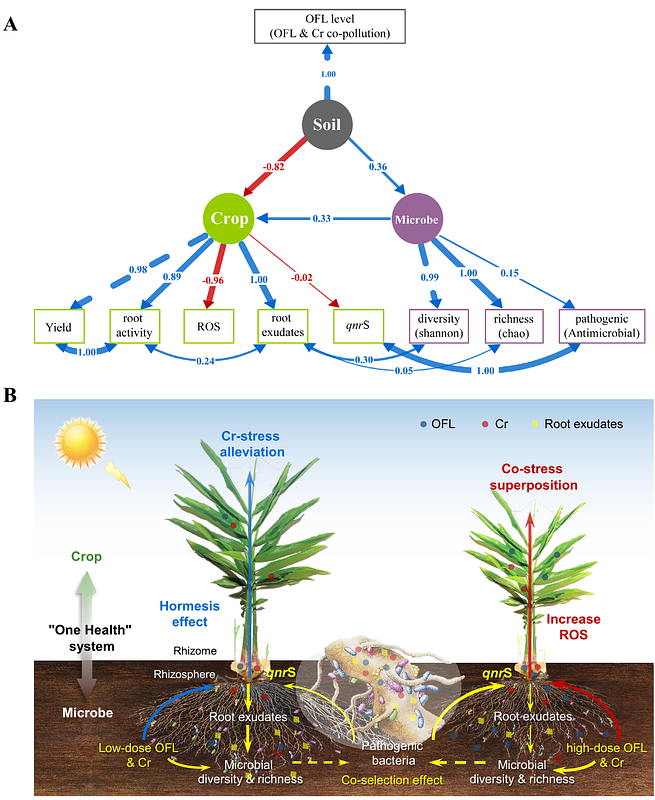New insights into tissue-specific responses and interactive characteristics of crop-microbe "One Health" system to soil chromium and ofloxacin pollution

New insights into tissue-specific responses and interactive characteristics of crop-microbe "One Health" system to soil chromium and ofloxacin pollution
Xu, J.-M.; Zhang, Y.-R.; Wang, K.; Zhang, G.; Liu, Y.; Xu, H.-R.; Zi, H.-Y.; Wang, A.-J.; Cheng, H.-Y.; Lv, Y.; Xu, K.
AbstractThis study firstly investigated the tissue-specific responses and interactive characteristics of the crop-microbe system to co-pollution with ofloxacin (OFL) and chromium (Cr) in soil. The results emphasized the hormesis effect induced by low-dose OFL (1 mg L-1) on ginger plants subjected to soil Cr stress. However, high-dose OFL (100 mg L-1) and Cr co-stressed plants exhibited reduced growth, root activity, antioxidant enzyme activities and photosynthesis-fluorescence performances, while the reactive oxygen species (ROS) reflected by O2{middle dot} and H2O2 significantly increased up to 43.34% and 78.63%, respectively, compared to other treatments. In addition, high-throughput sequencing indicated that OFL influenced rhizosphere microbial diversity, composition, and evolution, favoring Proteobacteria proliferation under co-pollution. Meanwhile, root exudate patterns shifted, with humic-like exudates, potentially interacting with pollutants and microbes. Notably, enrichments of antibiotic resistance gene (qnrS) in edible rhizome and potential pathogenic bacteria in ginger rhizosphere were observed under OFL and Cr co-pollution, raising environmental and food chain concerns. Through structural equation modeling, we quantitatively established correlations within soil-crop-microbe factors, emphasizing their interconnected nature. Overall, this study sheds light on the complex responses of the crop-microbe system to OFL and Cr co-pollution, highlighting the importance of understanding pollutant interactions for enhancing plant resilience and mitigating environmental risks.